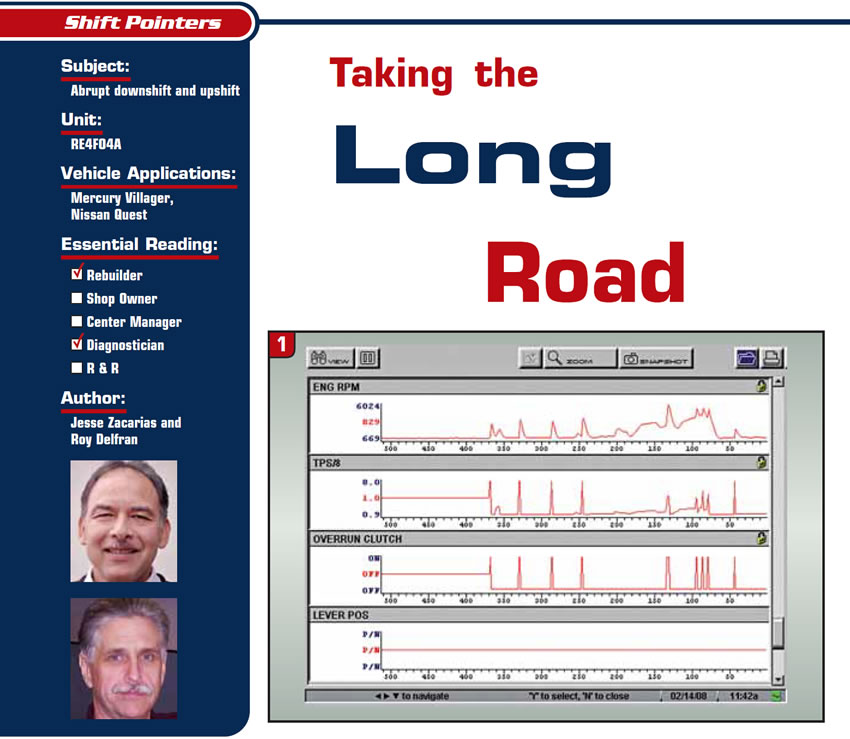A View into the Honda Five-Speed’s Shifting
If you’ve ever tried reading the explanation given by Honda in its hydraulic charts on how the transmission shifts, then you know how it can be confusing and hard to visualize, to say the least. The intent of this article is to make it easier to understand, using capture snapshots of the actual shifts using pressure transducers. We hope this makes it easier to visualize, for as they say, “A picture is worth a thousand words.”
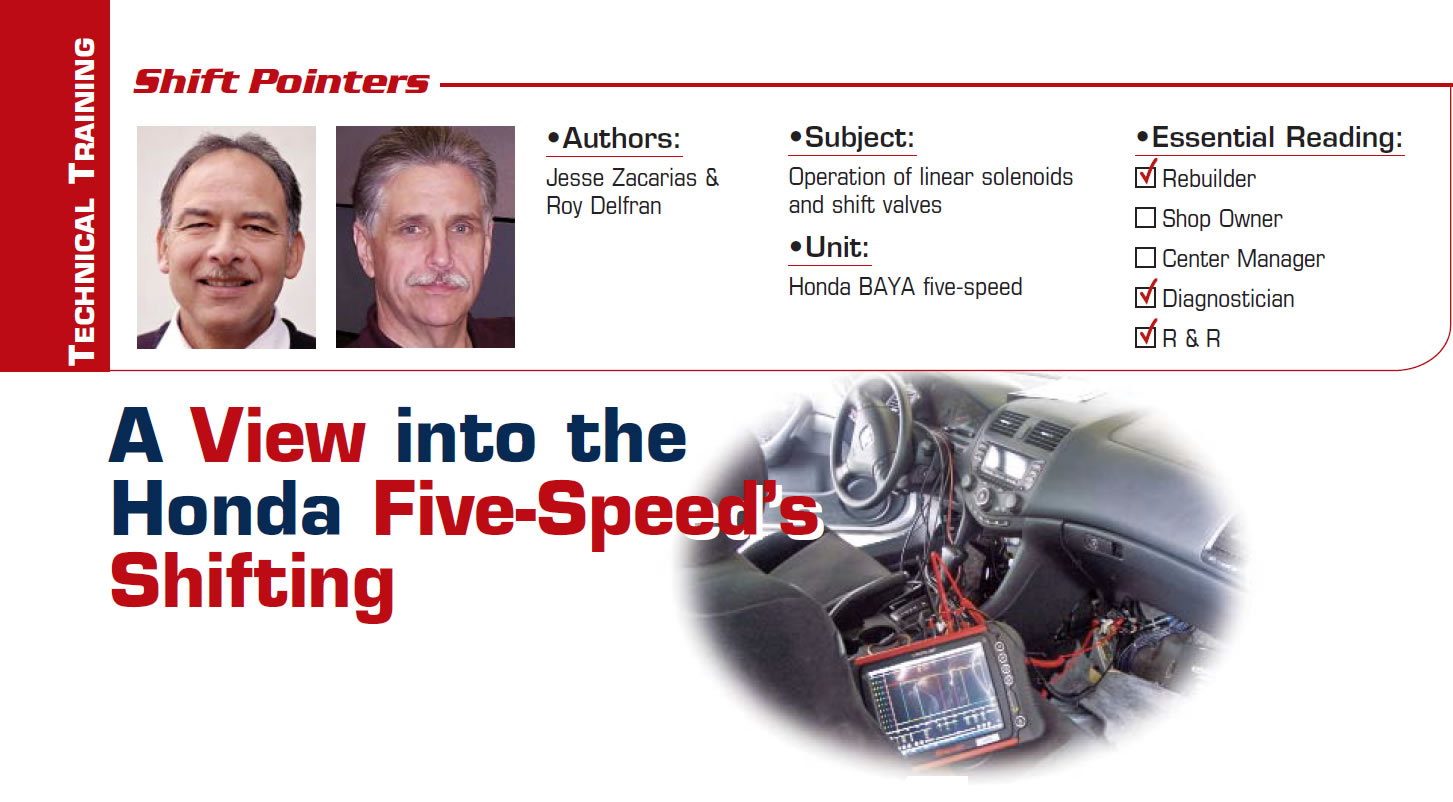
Wave Forms Provide Key to Diagnosis
I’m sometimes asked why I take on some vehicles that require more time to fix than I can charge for. My answer is, “because I like the challenge”; besides, you get to learn things you probably wouldn’t have an opportunity to see otherwise. Let me use this 1934 Ford Tudor Sedan (Figure 1) with a late-model GM drivetrain as an example.
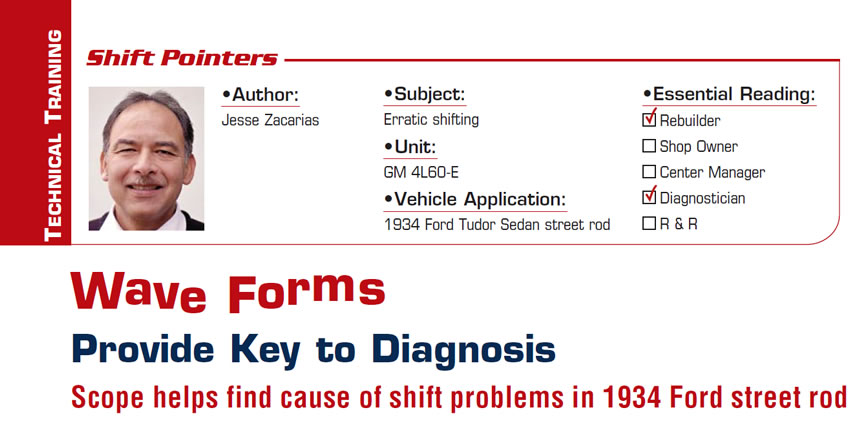
BMW X5 Short Circuit
Doing electrical work can be interesting at times, and you never know what you will discover to be the cause of the problem. For example, a customer brought us his 2001 BMW X5 with the 5L40-E automatic transmission in failsafe. Another shop had worked on the engine and told him that the problem was with the transmission. When we checked for codes it had multiple codes in the engine control module (Figure 1).
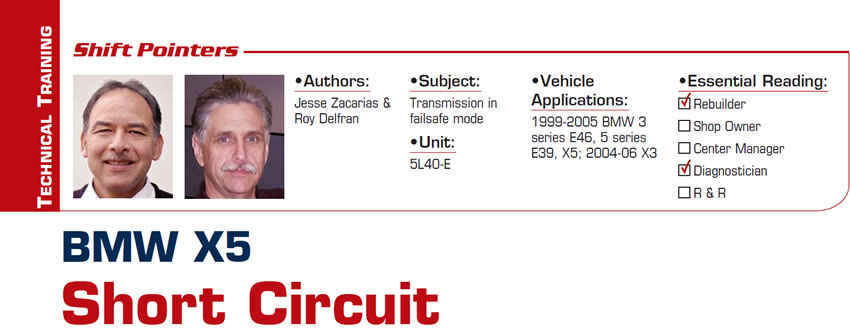
01J CVT: Diagnosing and Repairing Code 17090
A 2003 Audi A4 with an 01J continuously variable transmission (CVT) came to our shop. The customer complained that the vehicle was sluggish in forward and had no reverse and that this would take place only when all the lights in the gear indicator “lighted up and flashed.”
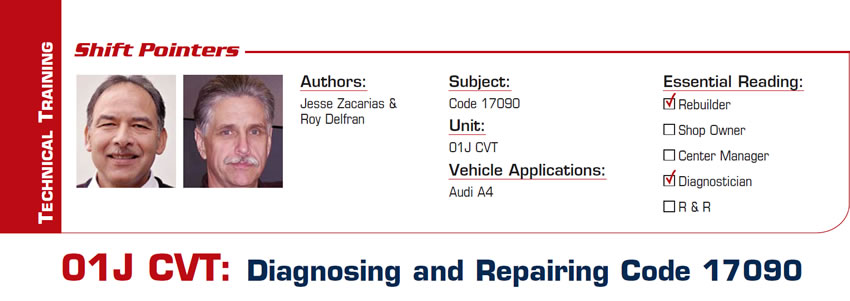
Analyzing Data Helps Solve Complicated Problems
With the addition of parameter identification data (PID), we can combine data with our knowledge of the way a transmission is designed to work and use it as a form of X-ray that permits us to see inside the transmission, so to speak. Let us use the following example to illustrate this.

When the Obvious Is not so Obvious
We had a 1995 Ford Super Duty with a 7.3-liter diesel engine and E4OD transmission that had no trouble codes but appeared to be going in and out of TCC lockup at steady cruise speed. If you accelerated hard when this was going on the TCC would engage properly until you came back to cruising speed and there was no more load on the engine. This was a commercial truck that had a heavy air compressor in the back and was always towing a big trailer, so the problem was very noticeable as the truck was being driven.

Making Use of Wiring Diagrams to Troubleshoot
We have found the wiring diagrams of a transmission to be a very useful tool in figuring out how it is designed to work electrically. This information can help narrow down the problem when we are dealing with an electrical malfunction.
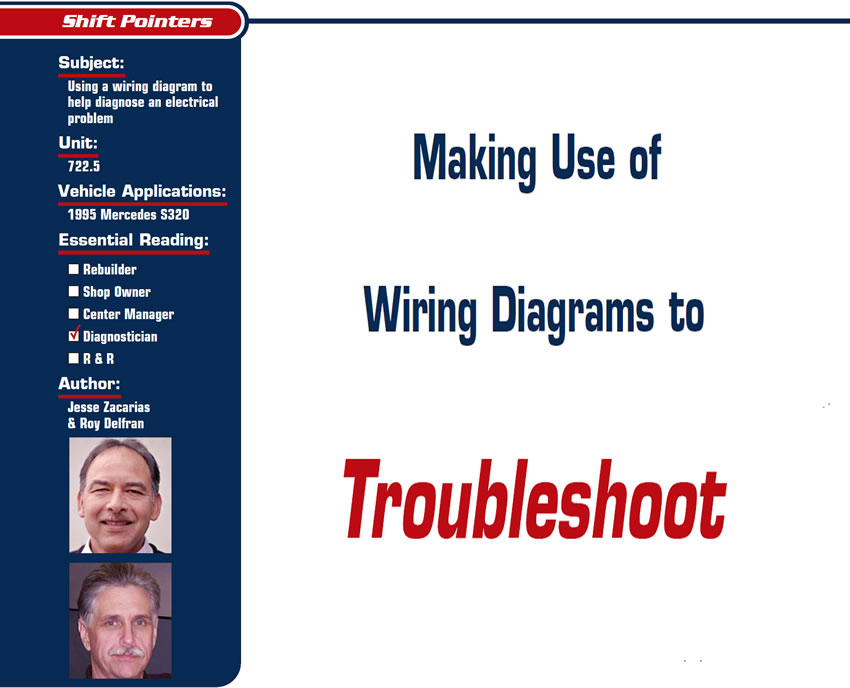
Hindsight Is 20/20
When we installed the new battery we checked the charging system again (the lazy way mentioned previously), and since we saw 13.8 volts we released the vehicle. A few days later she came back complaining of the same problem. This time when we checked the charging system (same old lazy way) we noticed that the generator was not charging, so we recommended replacing the generator, because this type of generator uses a one-way clutch on the pulley and is known to go bad, so we figured (assumed) that that was why we had seen the system charge at some times and not others.
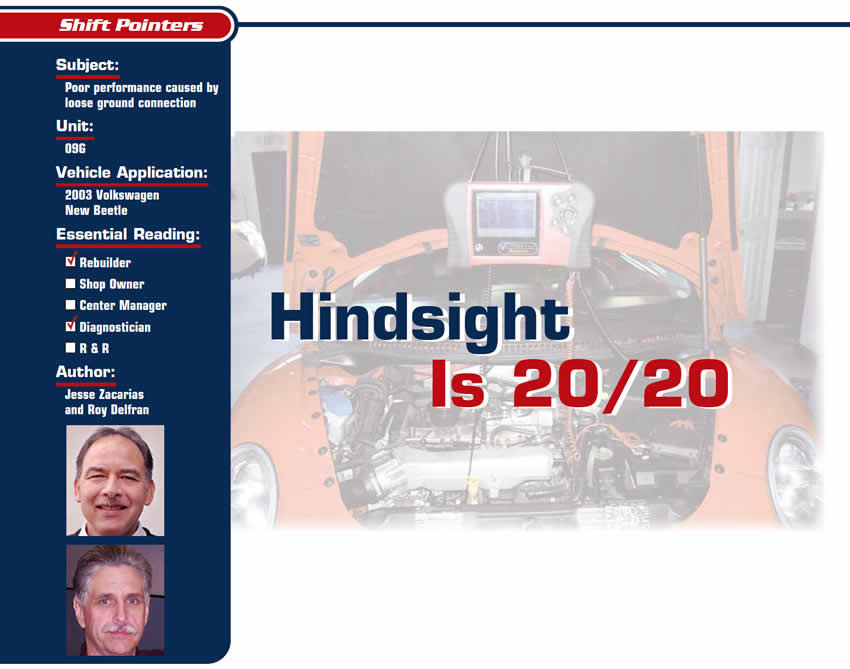
What We Do for a Buck
One of our accounts brought in a 2007 Ford F-450 with a 6.0 diesel engine and a 5R110W TorqShift transmission, complaining of a delayed engagement in reverse. The driver also complained that if he decided to accelerate hard just before coming to a stop, the transmission would neutralize and then engage harshly.
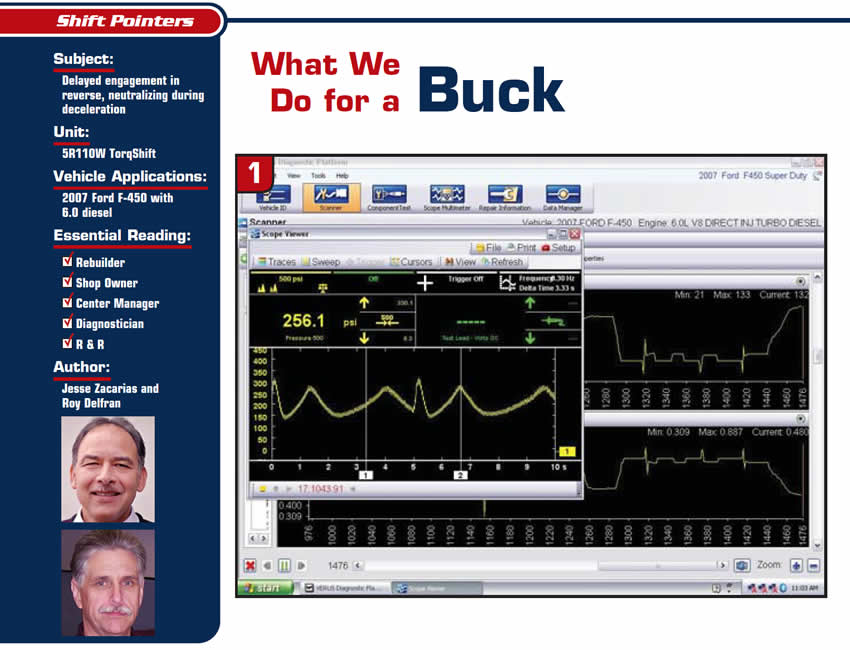
EPC Code Causing Loss of Power
Sometimes the programming of a vehicle’s computer can cause a symptom that can appear as a problem, leading a mechanic to try to repair a normal operation.
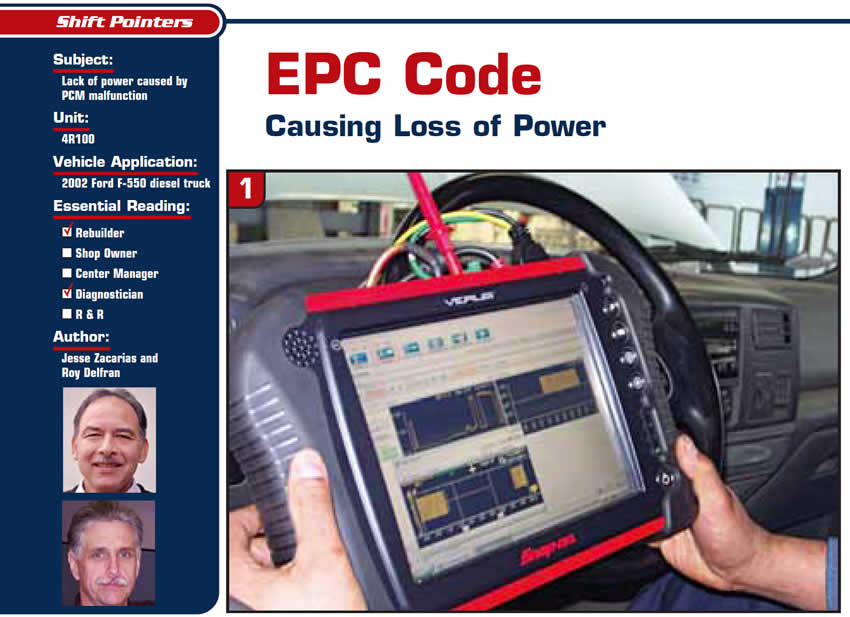
Singing the TCM Blues
We recently did a repair on a family friend’s car (first mistake); it was a simple problem. Her 1995 Chrysler Cirrus with a 41TE transaxle had codes 41 (L/R-solenoid-circuit error), 42 (2/4-solenoid-circuit error) and 21 (OD-pressure-switch circuit). The vehicle had only 81,000 miles, and she did not have very much money (same old story). The solenoid body failed the resistance test, so we replaced it. The solenoid-body connector was not making good contact with the solenoid body (common problem); it was replaced and the wire connections were soldered, not crimped.
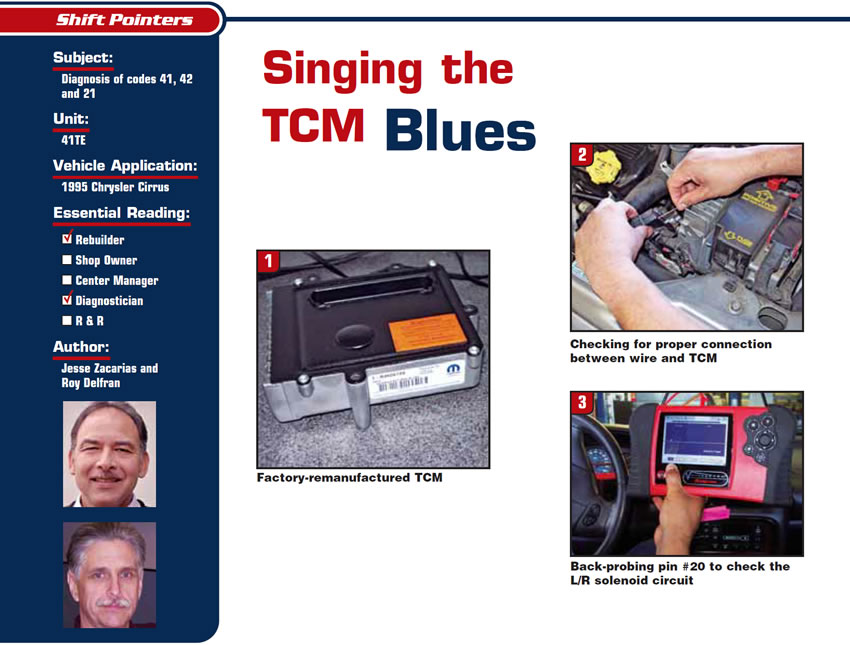
Taking the Long Road
A 1994 Mercury Villager with a Nissan RE4FO4A transmission came in with an abrupt downshift and upshift coinciding with the accelerator being depressed and released and was more noticeable at freeway speeds (about 60 mph).
